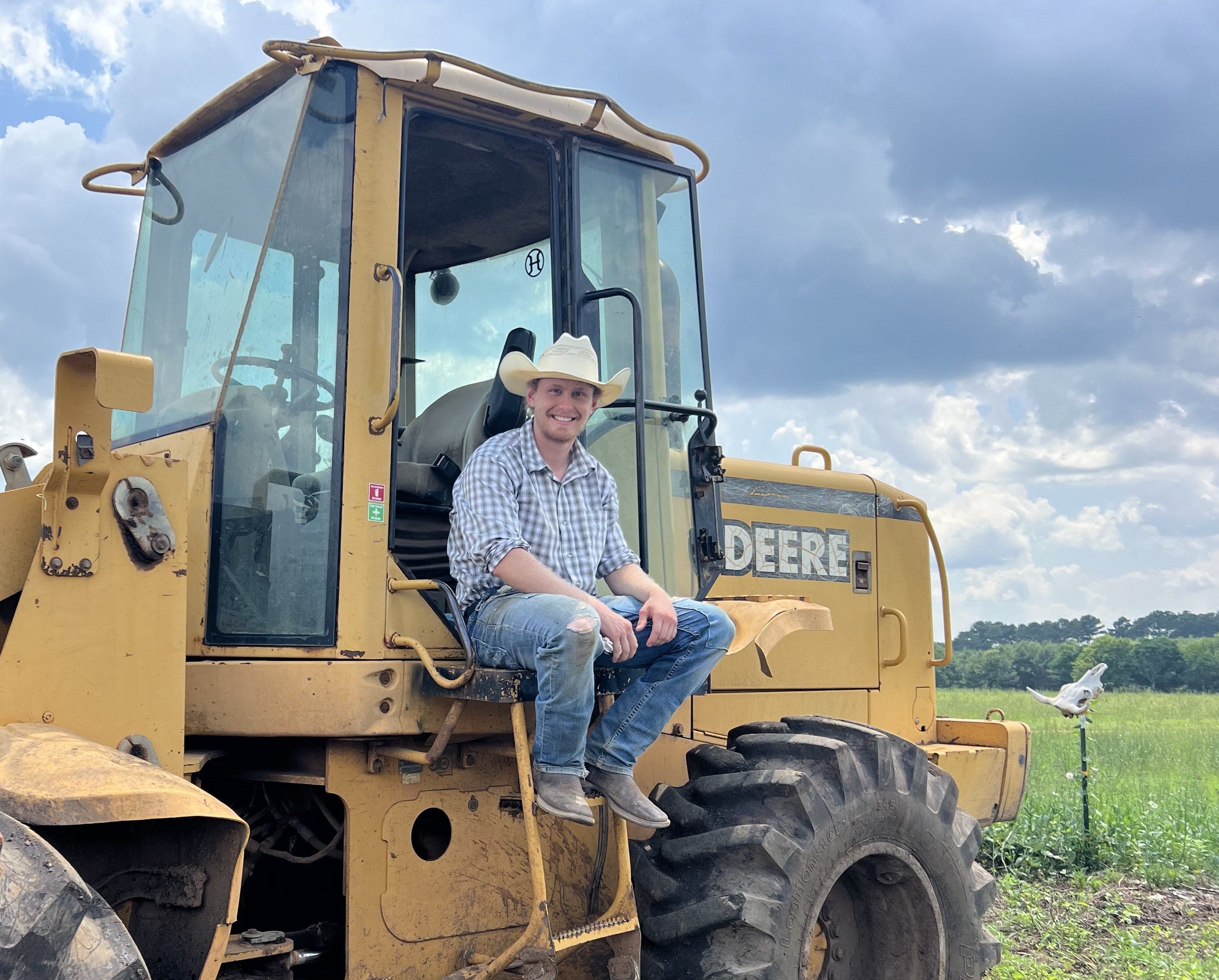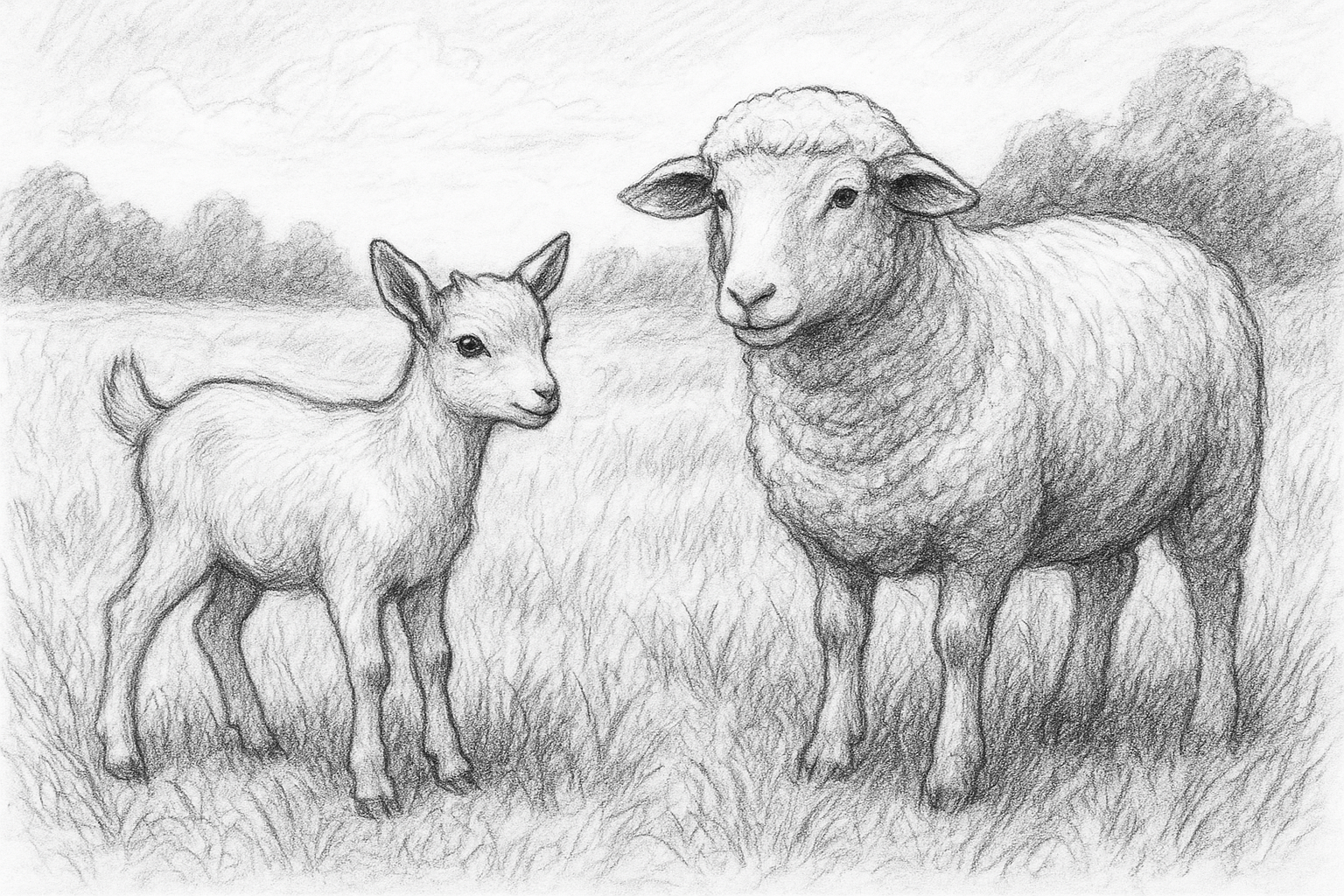TheFarmersDigest
The Farmers Digest
Aug 11, 2025

Editor
Chris Pigge

Editor
Miles Falk
Barber Pole Worms: Prevention and Treatment Ideas
Building your defense

Following the insights on barber pole worm biology from Part 1, managing these parasites involves combining practical approaches that work with the parasite's life cycle and support your animals' health. Chemical dewormers are becoming less effective due to growing resistance worldwide, so blending multiple strategies can help keep your livestock healthy and your farm sustainable. These suggestions are based on research, but it's a good idea to work with a veterinarian or local extension service to adapt them to your farm's needs.
Prevention: Ideas to Reduce Parasite Pressure
Prevention is a great starting point for managing barber pole worms. Knowing that eggs turn into infective larvae in about 3–4 days under warm, moist conditions and climb a few inches up grass blades, you can try practices that limit exposure.
Rotational Grazing as an Option
Rotational grazing can help reduce barber pole worm exposure. You might consider moving animals to a new paddock within 3 days to avoid larvae that develop from freshly dropped eggs. Resting paddocks until the grass fully recovers supports healthy pastures and reduces larval survival, benefiting both pasture and parasite management. Try experimenting with rest periods that fit your farm's grass growth and schedule. However, keep in mind that worms in the larva stage can survive anywhere from 2 weeks to 3 months in ideal conditions (shade, cool temperatures etc). That being said, in a hot pasture in direct sunlight they usually only survive a few days.
Trying Multi-Species Grazing
Nutrition to Support Animal Health
Good nutrition can help your animals resist parasites, as weaker animals are often more affected. You might try planting high-tannin forages like sericea lespedeza, a perennial legume that research suggests can reduce worm loads by interfering with parasite reproduction. It's a bit tough and less palatable, so animals may need time to adjust, and it doesn't grow well in all soils or climates. Starting with a small test plot can help you see if it suits your farm. Other forages like birdsfoot trefoil might offer similar benefits and be more palatable, though there's less research on them.
Another key consideration is making sure your animals have their vitamin and mineral needs met. Deficiencies make animals more vulnerable to infection and slower to recover. A properly balanced mineral program supports immune function and blood health, both of which are critical when dealing with a blood-sucking parasite like barber pole.
Key nutrients such as selenium, cobalt, zinc, and copper all play important roles, but balance is critical. Copper deserves special attention in sheep. While too little copper can weaken the immune response and increase susceptibility, too much can quickly lead to toxicity. Symptoms of copper toxicity in sheep include loss of appetite, depression, weakness, and dark or reddish urine. Because copper tolerance varies by breed, age, and regional soil conditions, it is best to work with a veterinarian or livestock nutritionist to tailor your mineral program safely.
A diverse, well-managed pasture can also contribute to mineral and vitamin intake by giving sheep access to a range of plant species with different nutrient profiles. While supplements are often necessary, good forage diversity can reduce nutritional gaps and support overall animal health.
Exploring Vaccination Options
A vaccine called Barbervax, used in places like Australia and South Africa, targets the barber pole worm's blood-feeding process. It requires multiple doses to build immunity and works best alongside other strategies. It's not available everywhere, but keeping an eye on its availability in your area could be useful as it becomes more accessible.
Monitoring: Keeping Tabs on Parasite Levels
The FAMACHA system gives you a simple way to spot anemia from barber pole worms without checking every animal every time. You're basically looking for pale or white coloring in the lower eyelid, which signals blood loss from worms.
Here's what matters: Pull down the lower eyelid and look at the pink tissue inside. Healthy animals show bright red or pink coloring. Animals with white or very pale coloring likely need deworming. In-between colors might need treatment depending on the animal's condition.
Most experienced farmers skip the numbered scale and just watch for that telltale white coloring that screams "this animal is in trouble." When you're out checking the herd, look at a few animals rather than trying to examine every single one every time. Focus on animals that look off, are lagging behind, or seem weak.
Check more often during warm, wet weather when worm loads build up quickly. Around breeding and birthing times, dormant worms can become active, so keep an eye on pregnant and nursing females. If you start seeing multiple animals with pale eyelids, that's your signal that worm pressure is building across the herd and you need to take action.
The key insight: about 20% of your animals typically carry 80% of the worm load. By targeting treatment to animals showing symptoms rather than deworming everything that moves, you can slow down resistance while protecting the animals that actually need help.
Tracking and Managing Your Flock
Keeping records of which animals need frequent treatment can help you decide whether to cull. Animals needing deworming three or more times a year should probably be culled because they may pass high susceptibility to their offspring, increasing pasture contamination. Fecal egg counts, done by a vet or using the McMaster Method at home, can provide more insight. If 5–10% of your animals show over 500 eggs per gram of manure, treating the whole herd might be worth considering.
Treatment: Options When Parasites Persist
When prevention and monitoring aren't enough, targeted treatments can help manage outbreaks while keeping dewormers effective over time.
Winter: A Chance to Reset
Winter can be a strategic time to reduce barber pole worm pressure, especially in cold, dry regions where larvae die off. Moving animals to a dry lot or sacrifice area prevents pasture contamination and reduces reinfection risk going into spring. Deworming during this period may be effective, but should be guided by fecal egg counts and known resistance status. If treatment is needed, using a combination of effective dewormers from different classes at the same time can increase efficacy, but only use this method when backed by fecal egg count reduction testing. Always consult a veterinarian before implementing multi-drug strategies, especially before lambing or kidding when worm burdens can spike. There's no point in deworming if you don't have that big of an issue.
Copper Oxide Wire Particles (COWP)
Copper oxide wire particles (COWP) are small capsules filled with copper particles, given orally using a dosing gun or mixed into feed. They settle in the abomasum (a stomach compartment), where stomach acid releases copper that harms barber pole worms and may boost the animal's immune response. COWP are specific to barber pole worms and don't affect other parasites. Suggested doses are very low for small ruminants as sheep especially are prone to copper toxicity. Always check dosages with a veterinarian.
Strategic Chemical Deworming Explained
Chemical dewormers can help control barber pole worms, but they need to be used thoughtfully to avoid resistance, where worms stop responding to the drugs. Here's a clearer breakdown of how to approach it and why leaving some worms untreated matters:
Why Not Kill All Worms? The goal isn't to eliminate every single worm, as that's nearly impossible and can backfire. When you treat all animals, you kill off weaker worms, leaving only the strongest, resistant ones to reproduce. These resistant worms then spread, making dewormers less effective over time. By leaving some animals untreated (called refugia), you keep susceptible worms in the population. When resistant and susceptible worms mate, their offspring are often susceptible, which helps maintain the effectiveness of dewormers. For example, treating only animals with FAMACHA scores of 4 or 5 ensures that some worms remain to dilute resistance.
Choosing a Dewormer: Different dewormers work in unique ways, and resistance varies by region. Levamisole is often a better choice than ivermectin because its resistance is less likely to pass to offspring when resistant and susceptible worms mate. Your vet can help identify which dewormers work best in your area based on local resistance patterns.
Giving Dewormers Orally: Oral drenches (liquids given with a syringe over the back of the tongue) are often preferred over injectable dewormers, as injections may speed up resistance development. Oral delivery ensures the drug reaches the rumen effectively, targeting the worms where they live.
After Treatment: After deworming, consider keeping animals in a yard with water for 24 hours to let worm eggs pass out of their system. Then move them to a "clean" pasture—one not grazed for several months—to reduce exposure to surviving larvae.
Combination Deworming:
In cases where resistance is high, you can try combination deworming. Combination deworming is when you use two or more effective dewormers from different drug classes at the same time which can improve treatment results. The idea is simple: if some worms survive one product, the other product may kill them, reducing the overall number of resistant worms left to reproduce. This method only works if each dewormer is still at least partially effective on its own, so fecal egg count reduction testing is essential before trying it. Always give the full, correct dose of each product separately (never mixed in the same bottle) on the same day, and dose according to the heaviest animal in the group to avoid underdosing. Combination deworming should be reserved for situations where single-product treatments are failing and should be used strategically, not routinely, to help extend the life of available dewormers. Veterinary guidance is critical to ensure the right products, timing, and safety for your animals.
Putting It All Together
Managing barber pole worms involves combining approaches that fit your farm. You might try rotational grazing and add high-tannin forages or balanced minerals to support animal health. Use FAMACHA and fecal egg counts to monitor worm levels and focus treatments on animals that need them. In winter, you could consider a multi-dewormer strategy in a sacrifice area to reduce worm populations if needed. COWP or chemical dewormers can be used selectively, guided by FAMACHA scores and veterinary advice.
References
American Consortium for Small Ruminant Parasite Control. "FAMACHA."
Cornell Small Farms. "Sheep Management: The Deadly Barber Pole Worm."
Cornell University Small Ruminant Parasite Research. "Copper Oxide Wire Particles (COWP)."
Hobby Farms. "Control Barber's Pole Worms With FAMACHA."
Oklahoma State University. "Time to deworm sheep and goats once again."
Old Dominion Veterinary Services. "Prevent Parasites With Pasture Management."
Pennsylvania State University Extension. "Prevent Parasites Through Grazing Management."
Premier1Supplies. "Using Pasture Management to Eliminate Internal Parasites in Livestock."
Rutgers University Plant & Pest Advisory. "Summer sick lambs and goats. Is it Barber's Pole Worm?"
University of Rhode Island. "Online FAMACHA© Certification."
WormBoss. "Barbervax – A New Approach to Barber's Pole Worm Control."